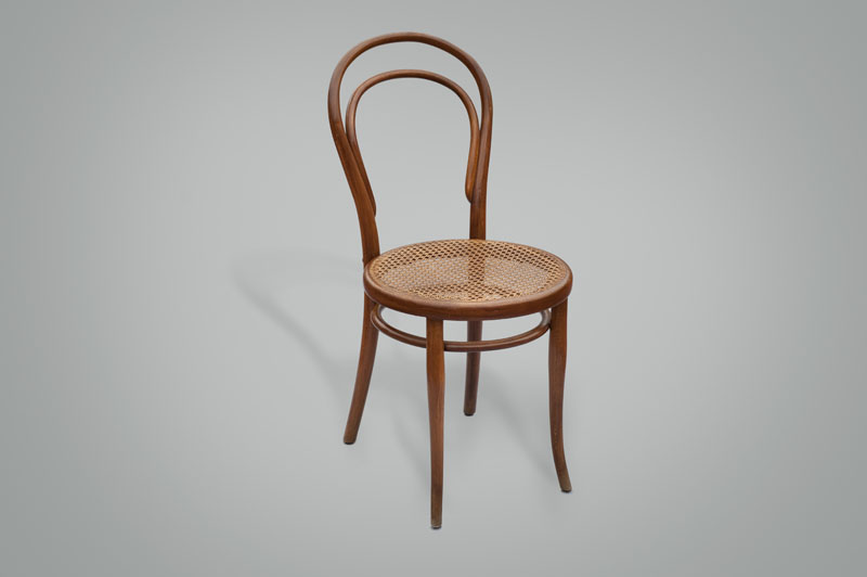Designs that have changed the world. The home.
10 / 14 / 2020
If we look back at the history of design, there are several everyday objects that can be considered real milestones. They are “inventions that changed the world”, due to their capacity to adapt their form to the role they have to play.
Over the next few weeks we will take a journey through some of these elements, without forgetting that the “form-function” concept so characteristic of design is, in fact, something very recent that appeared at the end of the 19th and beginning of the 20th century.
It originated in the German Bauhaus school. For the first time the shape of objects did not refer to anything known (historic styles) or recognizable (nature). The object took an abstract form, which was the result of a study of its usage needs. This is how functionalism, the aesthetic current that defined the Western world, was born. It was the origin of the objects we will now remember.
Our home is the space where design plays a more relevant role. In addition to the light bulb, the radio or the television, our homes are filled with innovative objects we continue to use today. Some of them are:
The No. 14 chair. Designed by Michael Thonet (1854), this is the first mass produced “standard” chair, in this case by the company Gebrüder Thonet (Thonet brothers). This was achieved by implementing a revolutionary woodworking system. Moreover, the No. 14 chair was made up of 6 modules and 6 screws, which lowered the costs and selling price. Traditional originality gave way to modern standard shapes.
The Cantilever chair: The first chair with a tubular steel supporting base, with no legs, was designed at the Bauhaus school in 1926. The Cantilever chair was considered a “machine to sit on”, with abstract shapes and industrial materials, practical and affordable. Although it was Mart Stam’s original idea, it was Mies van der Rohe who managed to patent this design, solving the problem of the Starn chair, which was too rigid and fragile.
The sewing machine: There is much debate about who was the inventor of the sewing machine. Many think it was Barthelemy Thimonnier, who was awarded the patent by the French government in 1830. However, his business did not last very long, as he was forced to emigrate to England after the outbreak of the French Revolution and a movement against sewing machines led by Parisian dressmakers.
It was in the United States where the sewing machine was definitely born in the mid-nineteenth century, thanks to farmers. Elias Howe, a farmer from Massachusetts, was the first to complete a prototype in 1844 and to be awarded a patent one year later. However, the first to mass produce this kind of machines was Isaac Merrit Singer, who confronted Howe in the so called “Sewing Machine War.” Some of the innovations added by Singer were the pedal instead of the handle, which allowed the worker to use both hands instead of one. Moreover, he also sold the first domestic sewing machine, light and practical for housewives.
The refrigerator: Although food preservation has always been carried out, the first electric refrigerator did not appear in the United States until 1913, introduced by the General Electric Company, the well-known company of the famous Thomas Alva Edison. Refrigerators began to be made of steel instead of wood, being one-piece and hermetically sealed to avoid emitting toxic fumes. This is a model that has been followed since then.
The mop: The Spanish aeronautical engineer Manuel Jalón Corominas invented the mop in 1957. A few years earlier, Jalón had had the chance of seeing a broom cloth in the United States. The system drained the cloth placed at the end of the stick through a metal bucket with two rollers that pressed the cloth and were foot-activated.
After returning to Spain and after talking to a friend, Jalón decided to design something similar so that women would not have to scrub floors on their knees. And so the popular mop was created by the company Rodex in Zaragoza. The roller system was eliminated years later and was replaced by the one we know today, giving way to the famous “Gaviota” mop, with sales of more than 70 million units in 20 years.
The Marquina oil cruet: Ramón Marquina, Spanish architect, sculptor and designer, remembers that when he was young, he always stained his fingers with the oil cruet because it dripped and was sticky. This memory was the origin of the Marquina oil cruet in the 1960s. The designer removed the cap and replaced it with a removable spout whose drops do not stain as they stay inside the funnel-shaped bottle. On the other hand, the dual conical shape adapts to the hand, eliminating the need for a handle.
Marquina embodied what designers at the time called the “good shape”, as opposed to the non-functional trends of the 1960s.








